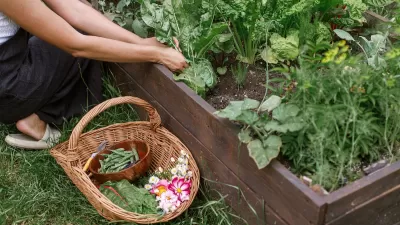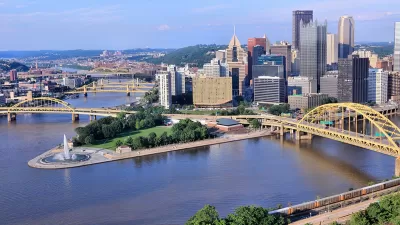A comment I hear frequently from planners is that the focus on food and planning is “trendy”. I must admit that this puzzles me quite a bit. Professional planners in rural areas have concentrated on planning for agriculture – food planning – for decades. Before we had professional planners, human populations planned their communities around food, whether they were planning how best to follow herds for hunting, structuring early agricultural societies, or developing the first cities where food proximity and trade were central considerations.
A comment I hear frequently from planners is that the focus on food and planning is "trendy". I must admit that this puzzles me quite a bit. Professional planners in rural areas have concentrated on planning for agriculture – food planning – for decades. Before we had professional planners, human populations planned their communities around food, whether they were planning how best to follow herds for hunting, structuring early agricultural societies, or developing the first cities where food proximity and trade were central considerations.
What is emergent in planning are new questions of food in urban settings. Our cousins in public health first began to raise some of these questions around food, health and place about a decade ago; planners are still moving into this work. In the hands of planners, the topic is morphing and diversifying. Planners are now aware of health, place, and food access in low-income communities, especially those of color, but also of food trucks, farmers' markets, urban agriculture, and more.
Some of what planners are looking at has a ‘back to the future' quality. Urban agriculture's demise was relatively recent: Manhattan had a working farm as late as 1930. Small specialty markets, such as butcher and cheese shops, used to be commonplace. In Baltimore, Arabbers still sell produce from horse-drawn carts – not, as you might imagine, in tourist areas, but in poor neighborhoods that rely on these mobile markets for access to fresh fruits and vegetables.
For decades, planners have treated food provision as a private sector issue, one that is best addressed by market forces or, at most, within the context of economic development. Treating food access as a component of a complete neighborhood,one for which planners might provide extra attention or incentives (like affordable housing, for example) has not been part of the approach.
It isn't that food is trendy, it is that it is only recently that planners have understood why their work should include attention to food. Does this make it a passing fad? One that doesn't merit an infrastructure that includes new planning school courses, tracks at APA conferences, or its own conferences? I don't think so. The planning problems presented by food, from its production and processing to access, and to what kinds of food are accessible, and by whom, are not going to disappear until humans no longer require food to live. If we do a good job addressing these questions then food will become ‘one of those things' that is part of the routine work of a planner. It will cease to be trendy because it will have been successfully incorporated into our understanding of the communities for which we are responsible. The present problems will be addressed (but never completely die away) and new food-related issues will emerge to take their place. Food planning may cease to be a focus in its own right, but only because it has taken its rightful place with other components of community development. It is only if we ignore its rightful place that it will continue to stand out.

Planetizen Federal Action Tracker
A weekly monitor of how Trump’s orders and actions are impacting planners and planning in America.

Map: Where Senate Republicans Want to Sell Your Public Lands
For public land advocates, the Senate Republicans’ proposal to sell millions of acres of public land in the West is “the biggest fight of their careers.”

Restaurant Patios Were a Pandemic Win — Why Were They so Hard to Keep?
Social distancing requirements and changes in travel patterns prompted cities to pilot new uses for street and sidewalk space. Then it got complicated.

Platform Pilsner: Vancouver Transit Agency Releases... a Beer?
TransLink will receive a portion of every sale of the four-pack.

Toronto Weighs Cheaper Transit, Parking Hikes for Major Events
Special event rates would take effect during large festivals, sports games and concerts to ‘discourage driving, manage congestion and free up space for transit.”

Berlin to Consider Car-Free Zone Larger Than Manhattan
The area bound by the 22-mile Ringbahn would still allow 12 uses of a private automobile per year per person, and several other exemptions.
Urban Design for Planners 1: Software Tools
This six-course series explores essential urban design concepts using open source software and equips planners with the tools they need to participate fully in the urban design process.
Planning for Universal Design
Learn the tools for implementing Universal Design in planning regulations.
Heyer Gruel & Associates PA
JM Goldson LLC
Custer County Colorado
City of Camden Redevelopment Agency
City of Astoria
Transportation Research & Education Center (TREC) at Portland State University
Camden Redevelopment Agency
City of Claremont
Municipality of Princeton (NJ)






























